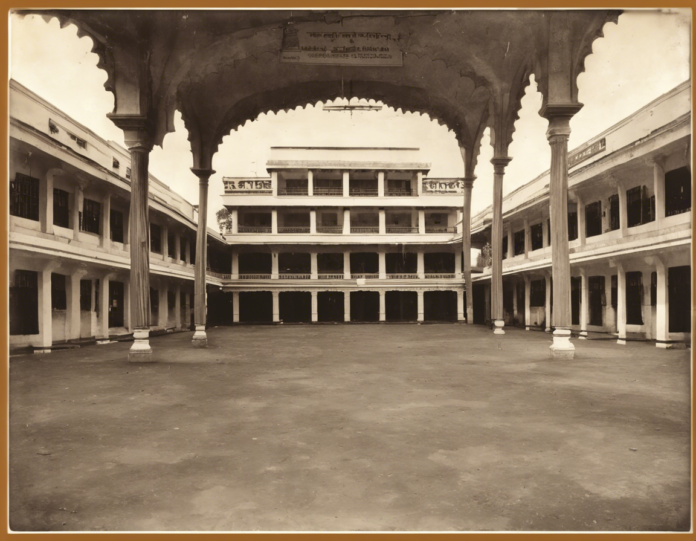Introduction
Empowering girls through education is a crucial aspect in achieving gender equality and promoting social and economic development. One significant initiative in this realm is the Kasturba Gandhi Balika Vidyalaya (KGBV) program in India. This article delves into the details of the KGBV program, its objectives, impact, challenges, and the way forward.
1. Overview of Kasturba Gandhi Balika Vidyalaya (KGBV)
Started in 2004 under the Sarva Shiksha Abhiyan, the KGBV scheme aims at setting up residential schools for girls belonging to disadvantaged groups in educationally backward blocks. Named after Kasturba Gandhi, the wife of Mahatma Gandhi, these schools primarily target girls, especially those from marginalized communities, providing them with quality education and necessary support for their overall development.
2. Objectives of KGBV
- Promoting girls’ education: Encouraging the enrollment of girls in schools and reducing drop-out rates.
- Empowering girls: Providing them with access to quality education, life skills, and opportunities for personal growth.
- Ensuring inclusivity: Focusing on girls from SC, ST, OBC, minority communities, and those with disabilities.
- Improving learning outcomes: Enhancing the quality of education through innovative teaching methods and student-centered approaches.
3. Impact of KGBV Program
The KGBV scheme has shown promising results over the years, contributing significantly to girls’ education and empowerment. Some of the impacts include:
- Increased enrollment: Encouraging more girls to attend school and complete their education.
- Higher retention rates: Reducing drop-out rates among girls in disadvantaged communities.
- Enhanced learning outcomes: Improving academic performance and overall development of students.
- Empowerment of girls: Equipping them with skills, knowledge, and confidence to pursue their aspirations.
4. Challenges Faced by KGBV
While the KGBV program has been effective in many aspects, it faces several challenges that hinder its full potential:
- Infrastructure constraints: Inadequate facilities and resources in some KGBVs affecting the quality of education.
- Socio-cultural barriers: Deep-rooted biases and societal norms that limit girls’ access to education.
- Staffing issues: Shortage of trained teachers and support staff impacting the teaching-learning process.
- Monitoring and evaluation: Ensuring regular assessment and accountability to track the program’s progress effectively.
5. Future of KGBV Program
To enhance the effectiveness of the KGBV scheme and ensure sustained impact, several strategies can be implemented:
- Capacity building: Providing training and support to teachers and staff for better implementation.
- Community involvement: Engaging parents and local communities in promoting girls’ education.
- Sustainable funding: Ensuring adequate resources and financial support for KGBVs.
- Innovative approaches: Introducing new teaching methods, curriculum reforms, and skill-based training.
- Monitoring and evaluation: Implementing robust mechanisms for tracking progress and addressing challenges promptly.
Frequently Asked Questions (FAQs)
Q1. What is the eligibility criteria for girls to enrol in KGBV schools?
Girls from disadvantaged groups including SC, ST, OBC, minority communities, and those with disabilities are eligible for enrollment in KGBVs.
Q2. Are the KGBV schools only for girls or are boys also allowed to enrol?
KGBV schools are specifically designed for girls from marginalized communities. Boys are not enrolled in these schools.
Q3. Do KGBV schools provide vocational training along with academic education?
Yes, KGBV schools offer vocational training programs to equip girls with practical skills for employment and self-reliance.
Q4. How can parents/guardians apply for admission to KGBV schools?
Parents or guardians can contact the district education authorities or the nearest KGBV school for the admission process.
Q5. Are meals and accommodation provided to the students in KGBV schools?
Yes, KGBV schools offer residential facilities including meals, accommodation, and other necessary amenities for the students.
Q6. What is the role of the community in supporting KGBV schools?
Communities can contribute by promoting girls’ education, volunteering in school activities, and advocating for resources and infrastructure development.
Q7. How can individuals or organizations contribute to the success of KGBV program?
Individuals and organizations can support KGBV schools by providing resources, conducting skill-based workshops, mentoring students, and advocating for policy reforms.
Q8. Are there any success stories or case studies showcasing the impact of KGBV program?
Several success stories and case studies highlight the positive outcomes of the KGBV program in empowering girls, improving education access, and fostering community development.
Conclusion
In conclusion, the Kasturba Gandhi Balika Vidyalaya program plays a pivotal role in empowering girls through education, promoting inclusivity, and enhancing their socio-economic prospects. By addressing the challenges and embracing innovative strategies, the KGBV initiative can continue to make a significant difference in the lives of thousands of girls across India, paving the way for a more equitable and empowered society.















